Презентация wilsons disease



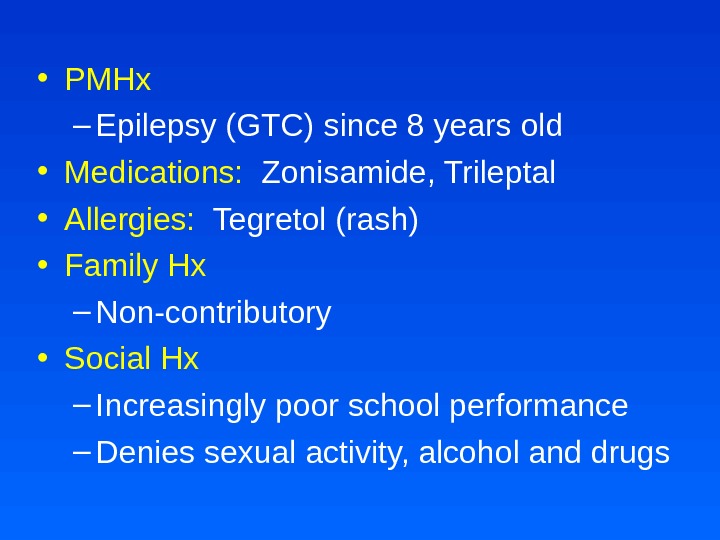
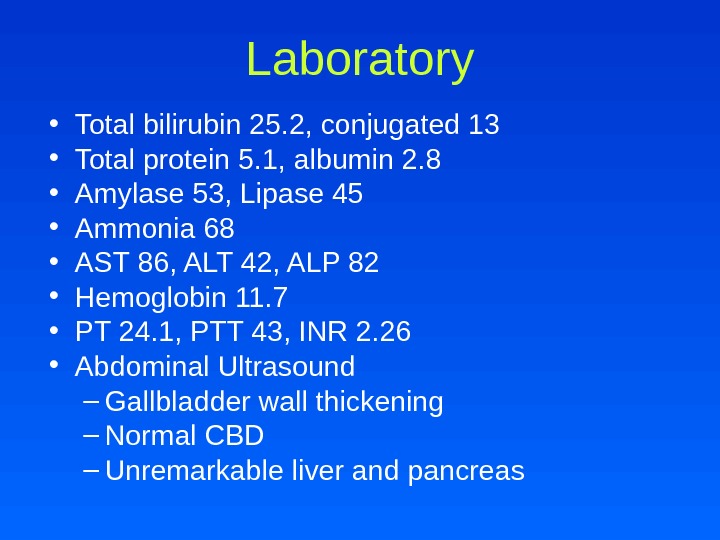

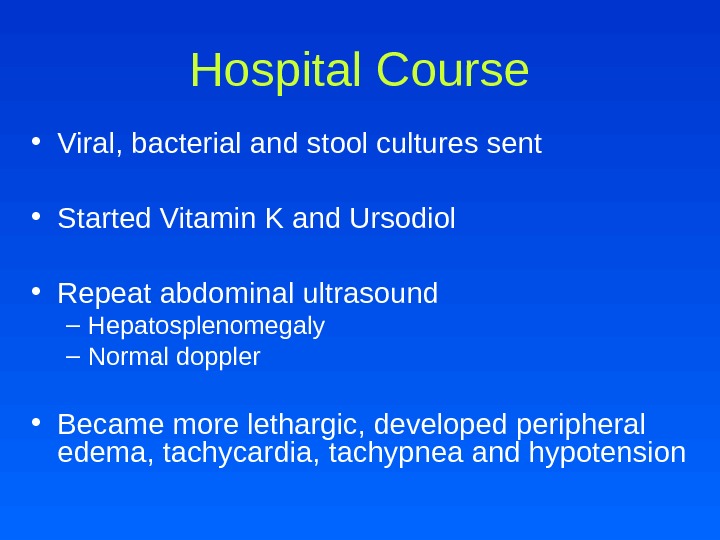
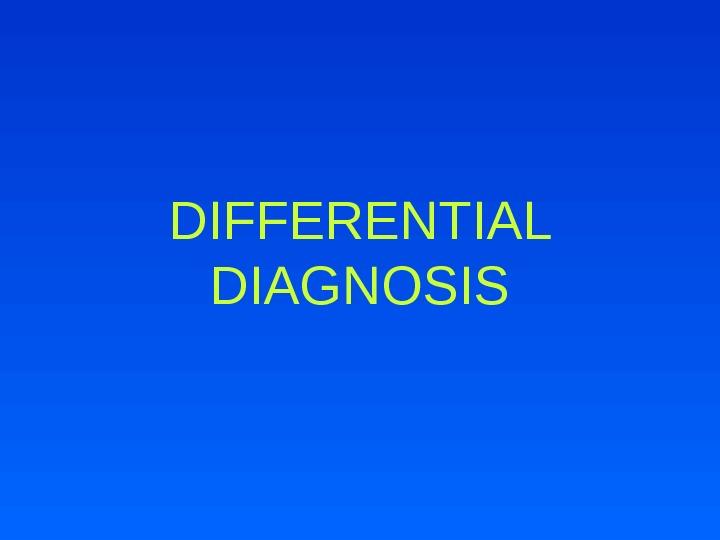

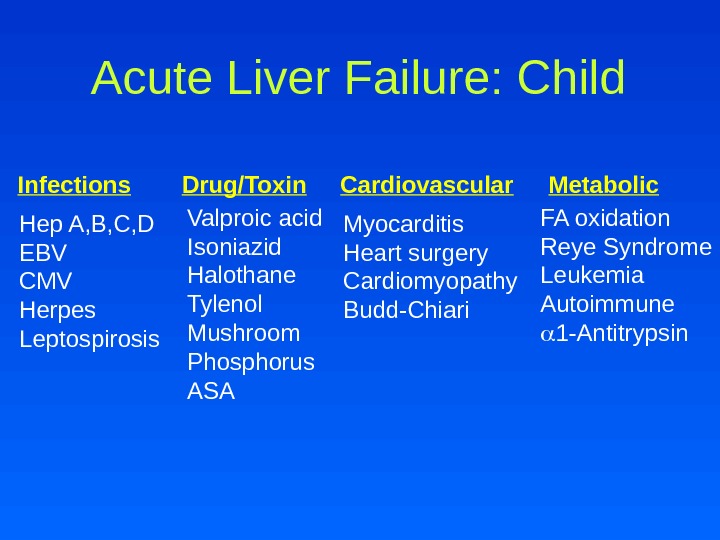
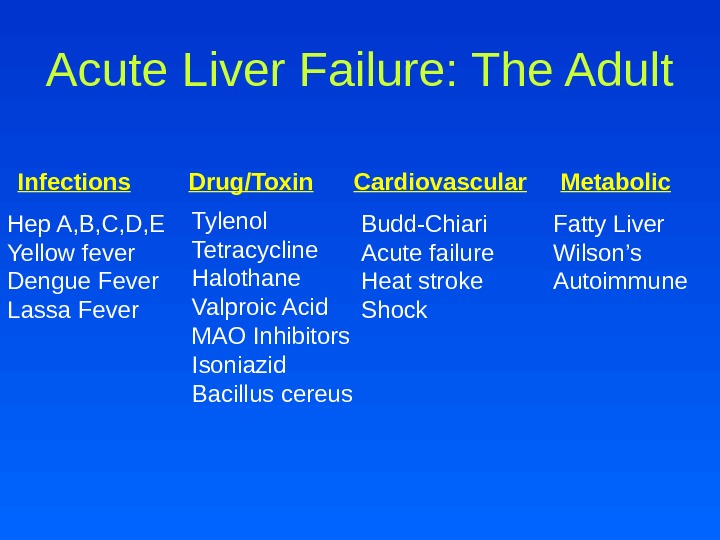
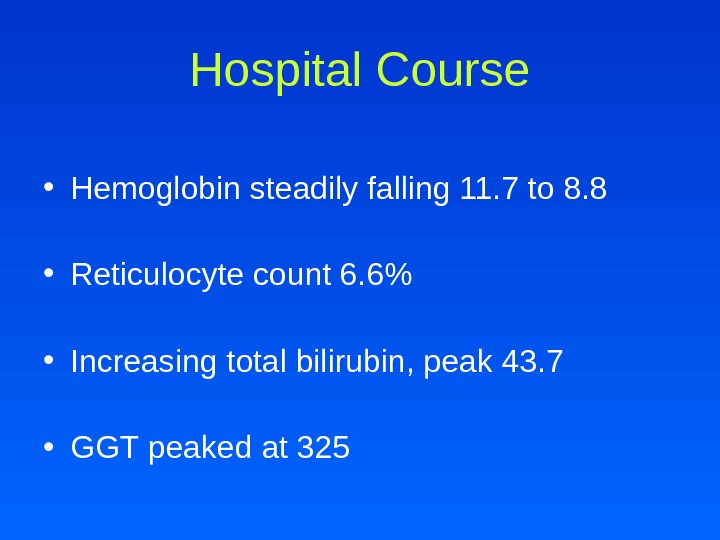

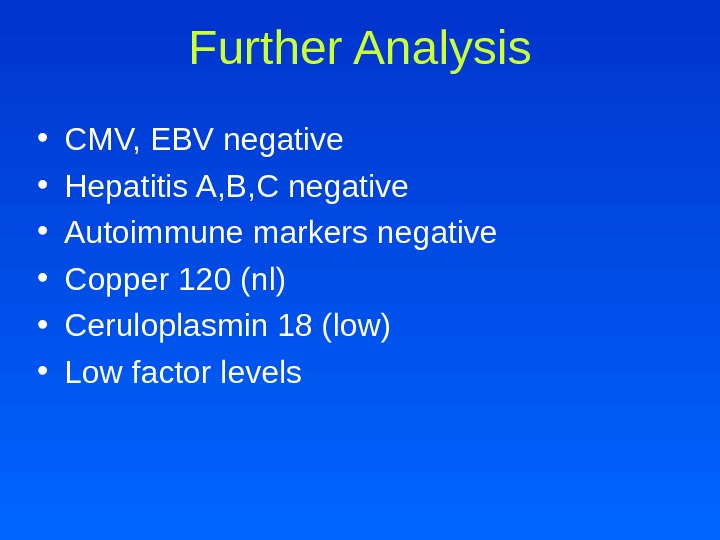
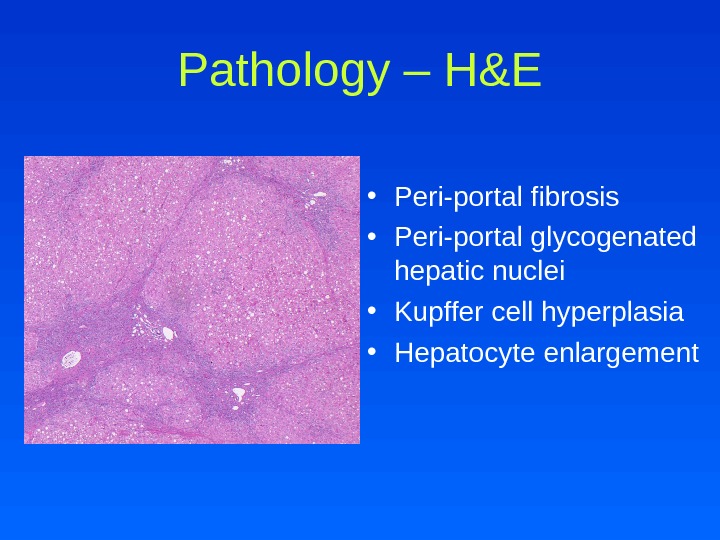

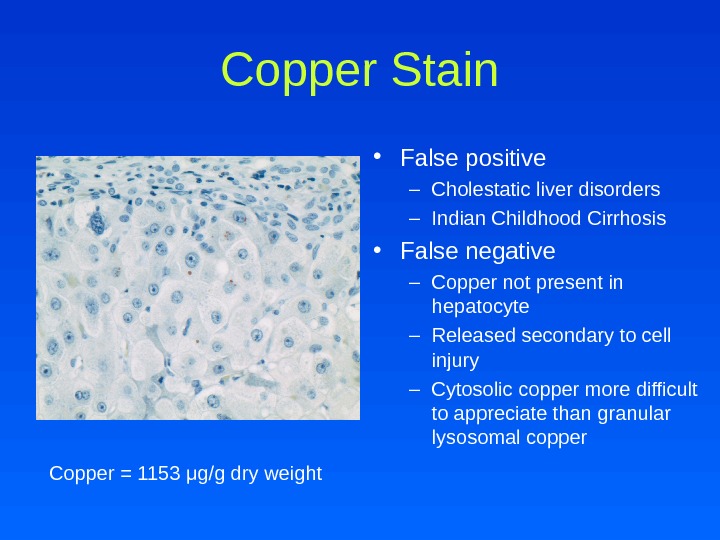
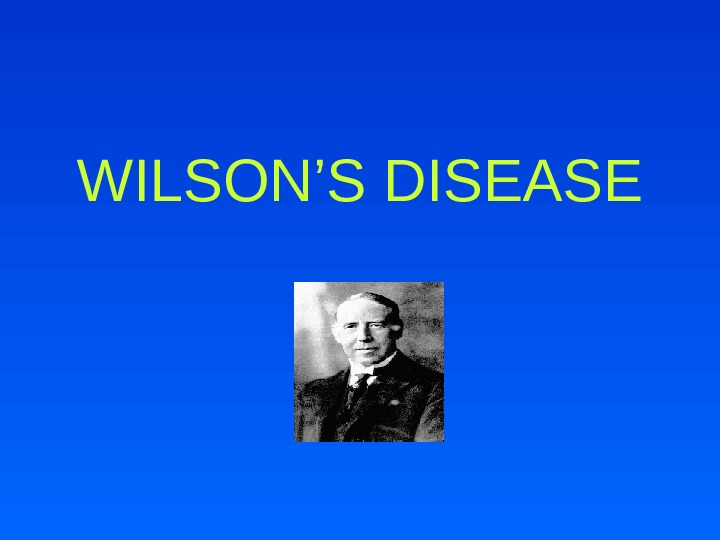
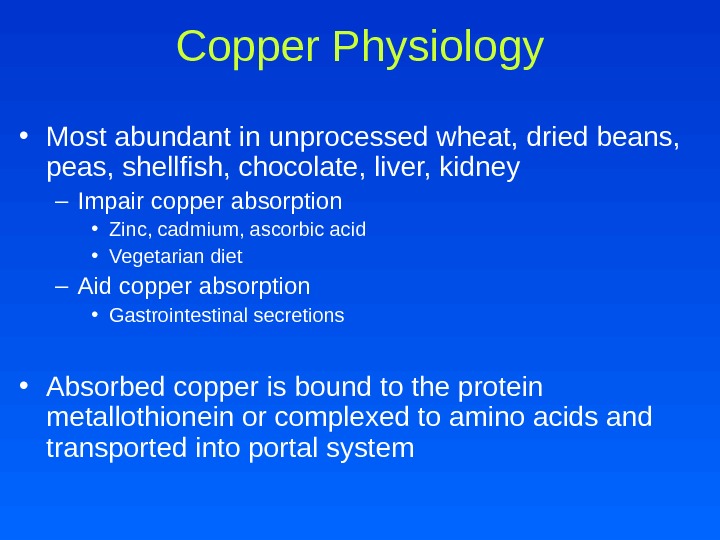
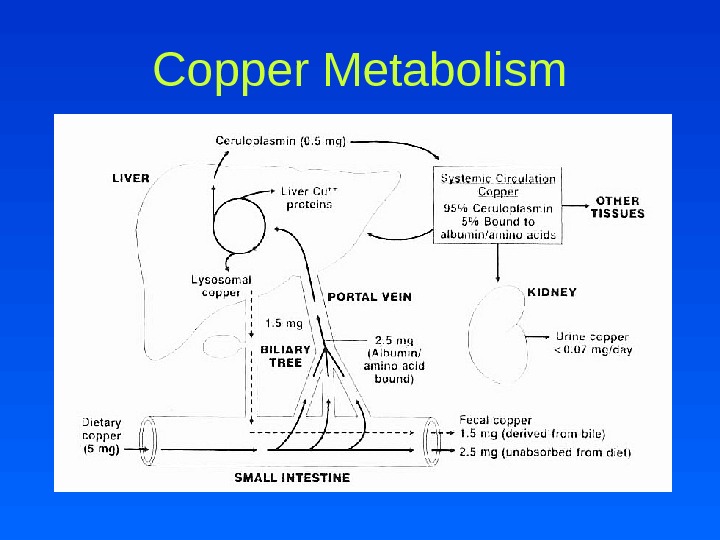
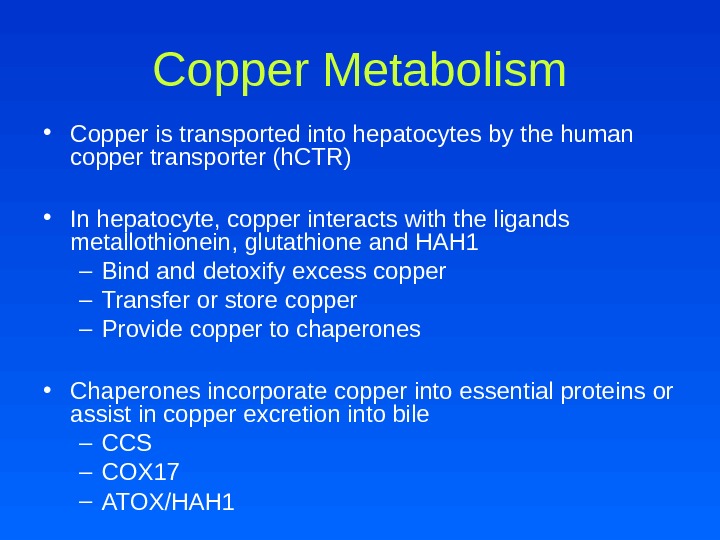
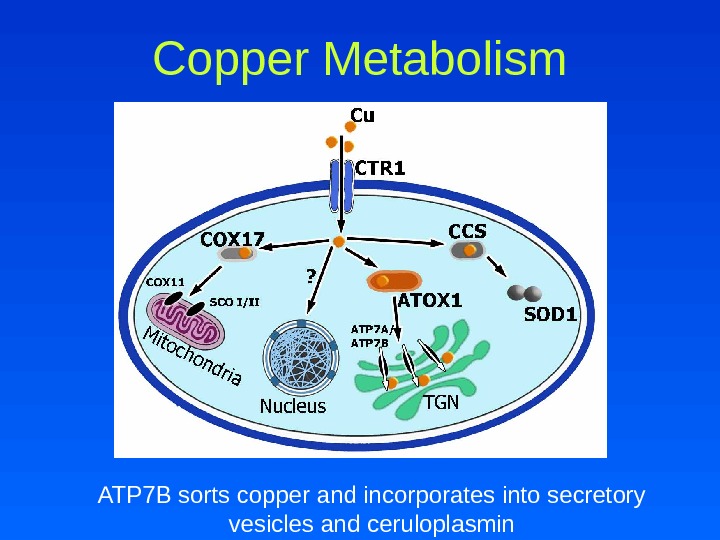
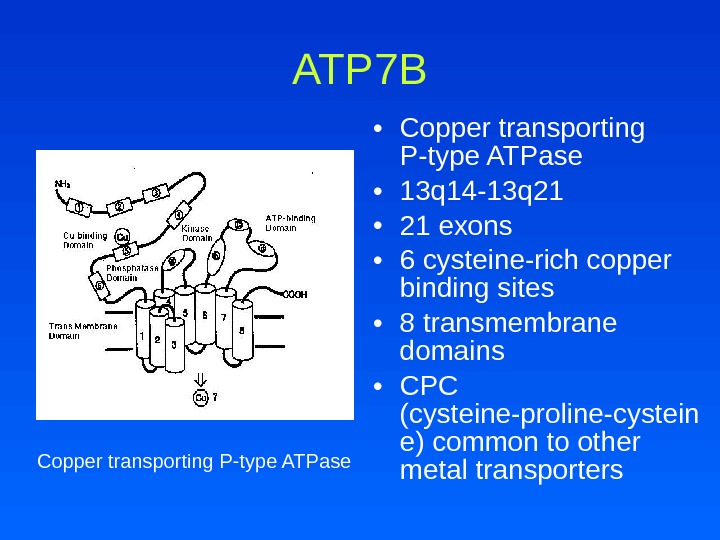
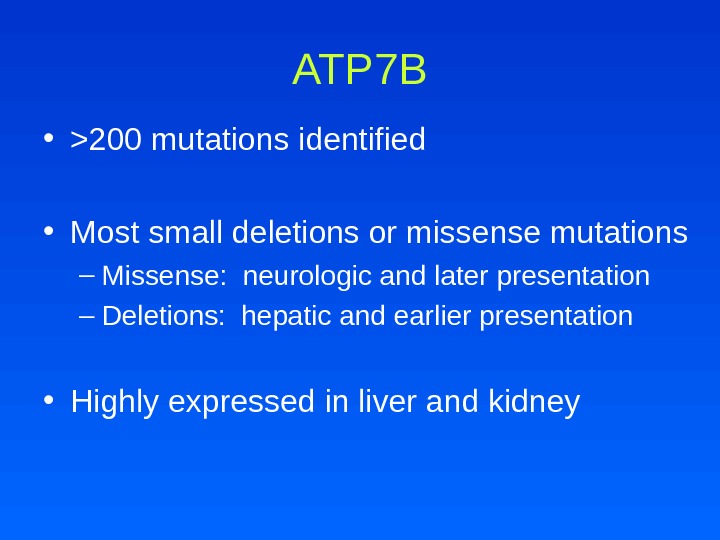
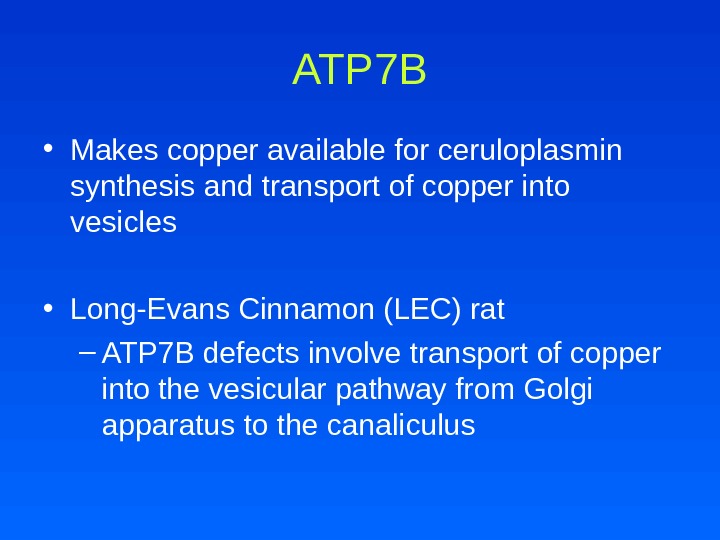

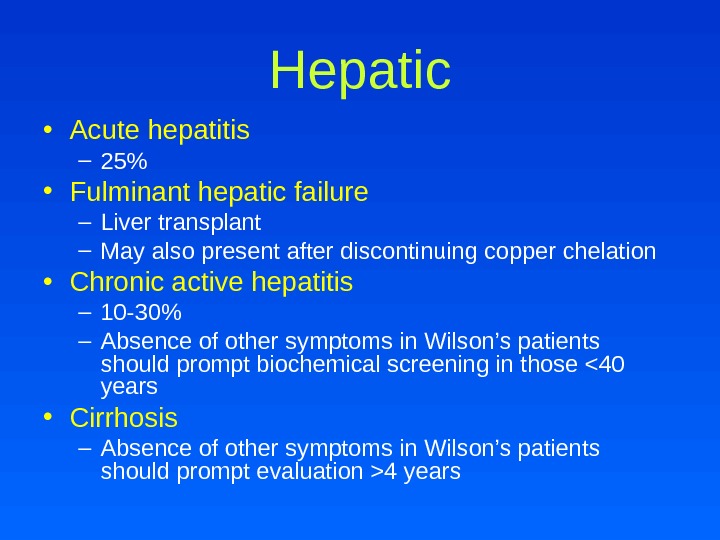
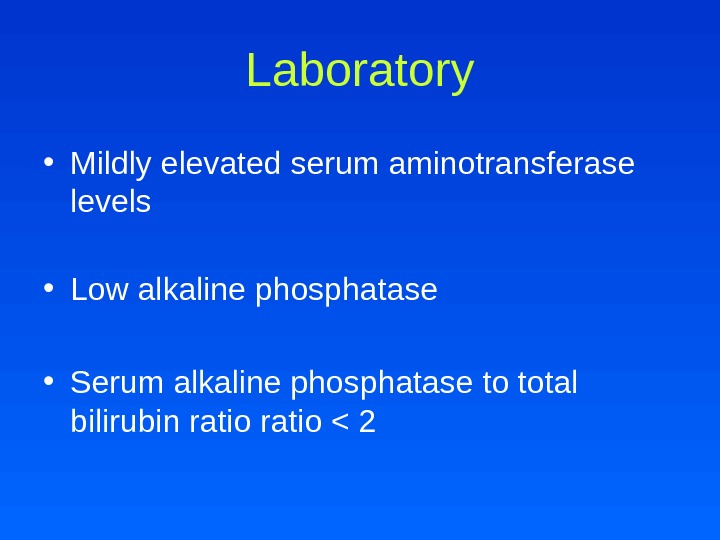
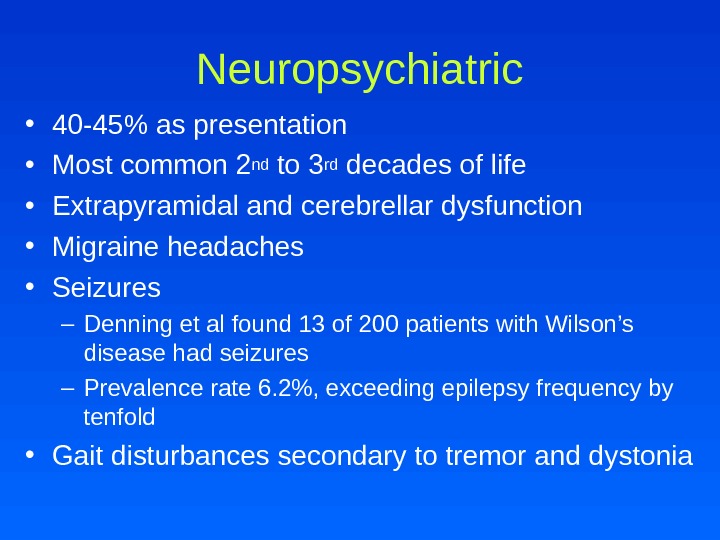

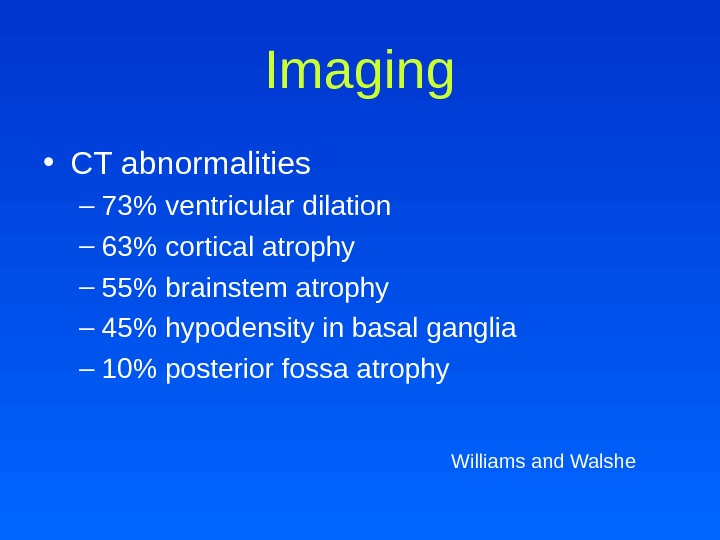

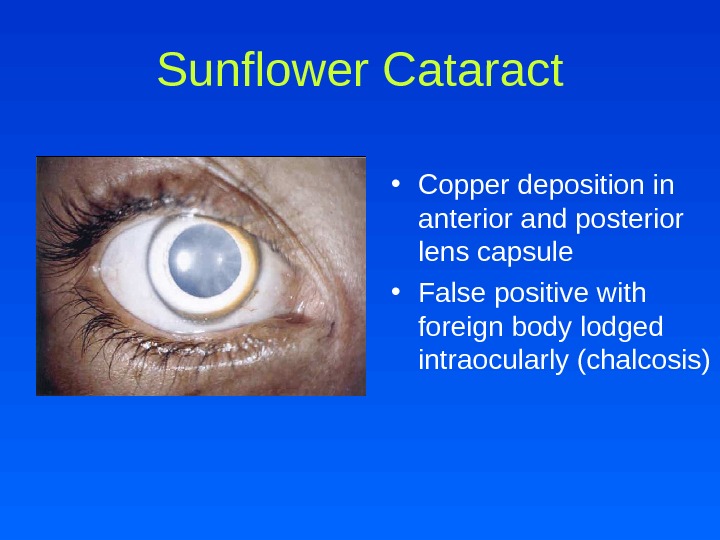
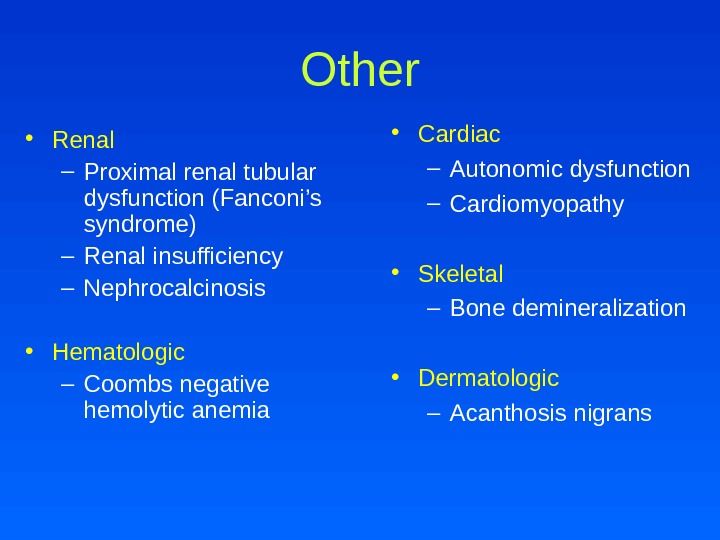
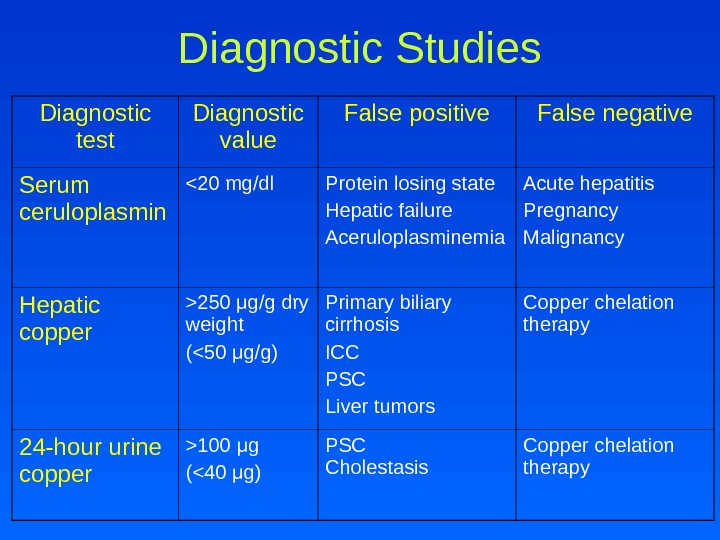
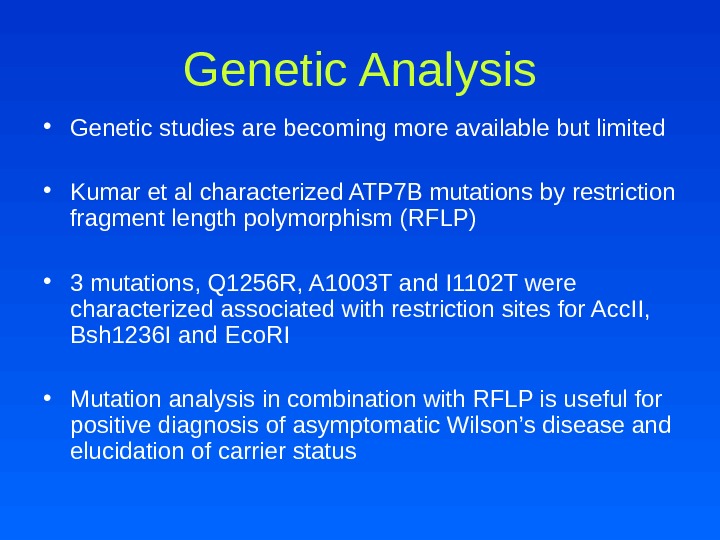
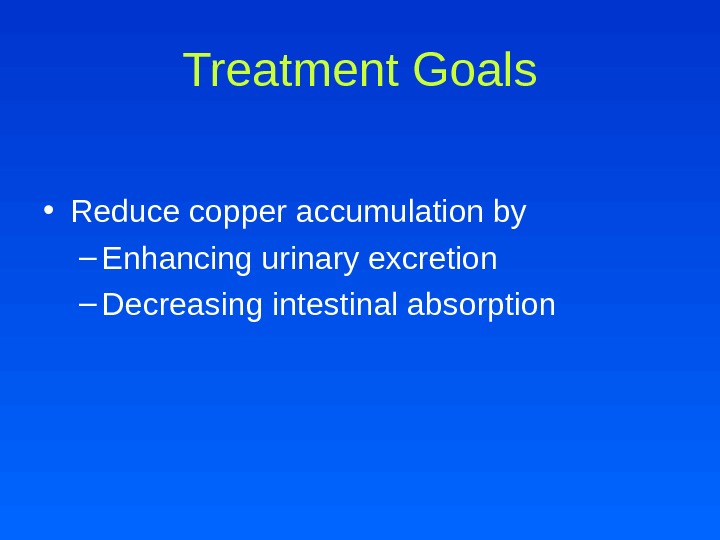
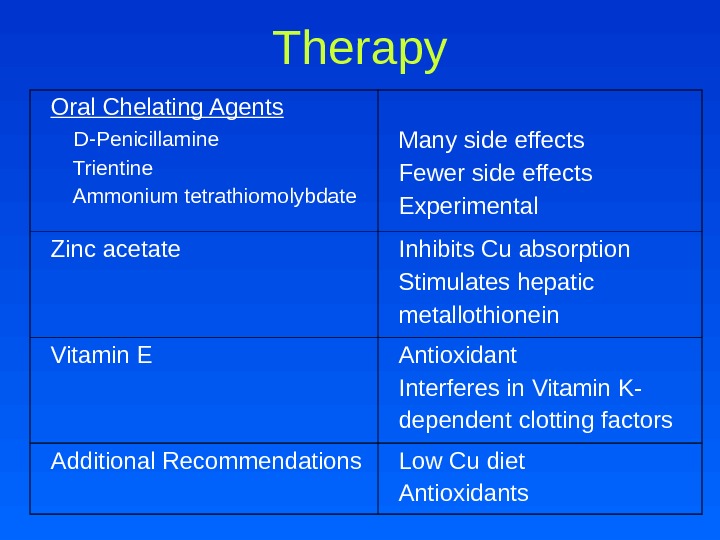
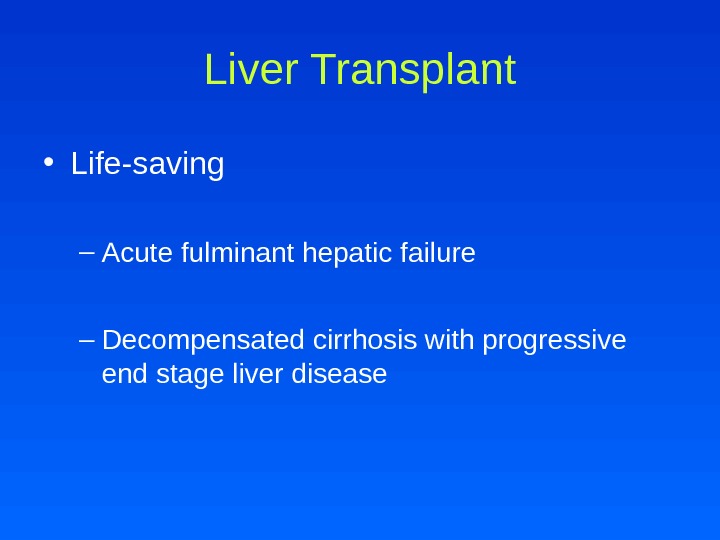

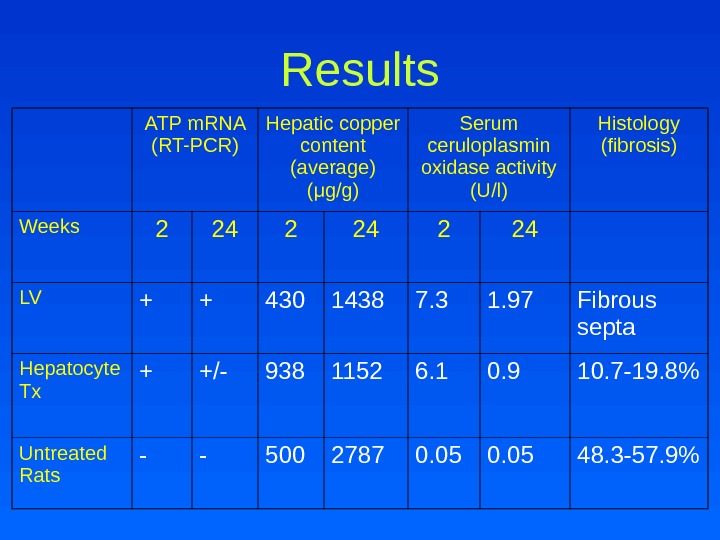
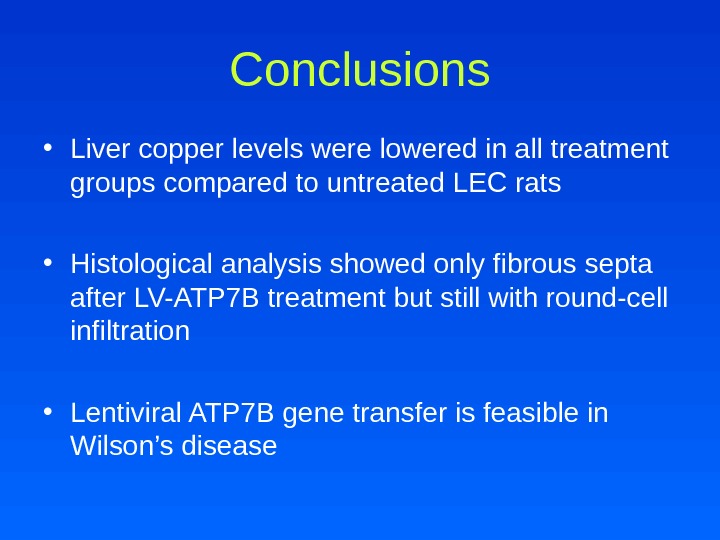

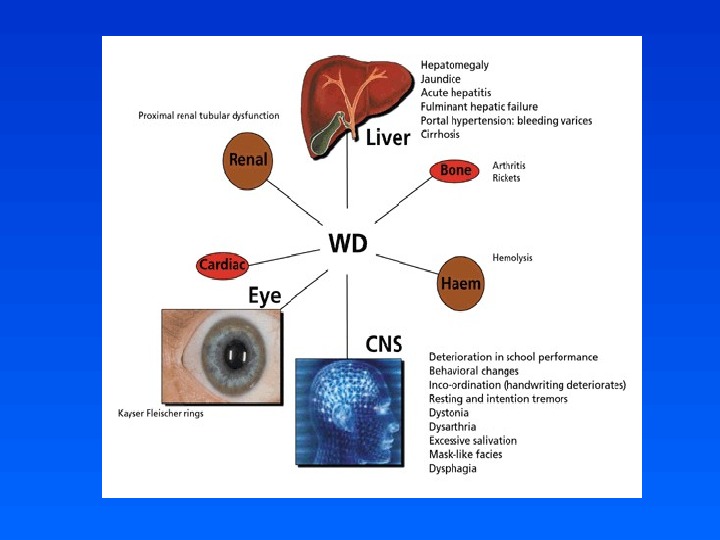
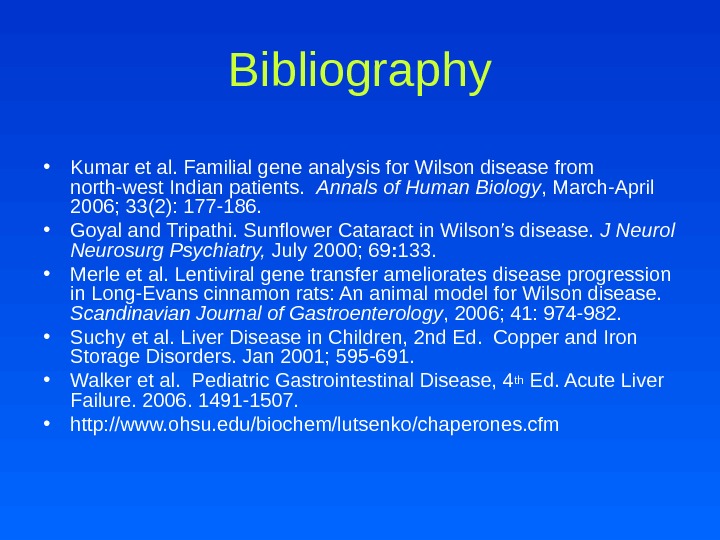
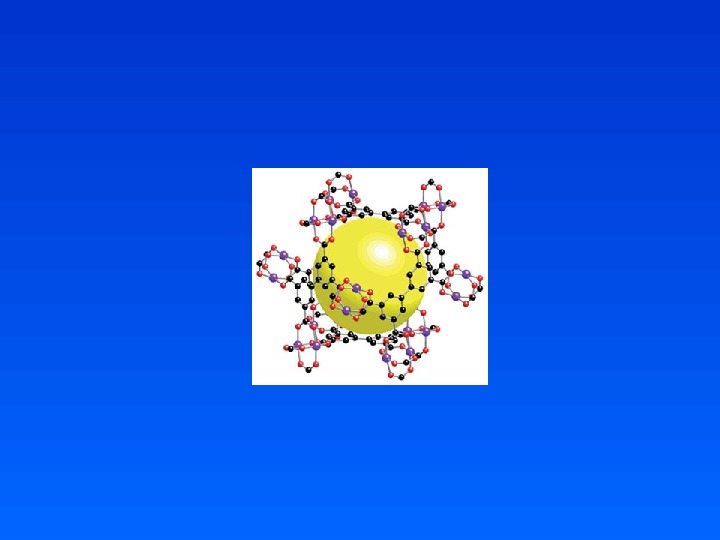
- Размер: 2.2 Mегабайта
- Количество слайдов: 45
Описание презентации Презентация wilsons disease по слайдам
 Clinical Case Conference
Clinical Case Conference
 HPI • 17 year old female presents with a 6 day history of increasing fatigue and diffuse abdominal pain • Dark colored urine, icteric sclera and recent onsent of pruritis • Denies fever, emesis, diarrhea and chills.
HPI • 17 year old female presents with a 6 day history of increasing fatigue and diffuse abdominal pain • Dark colored urine, icteric sclera and recent onsent of pruritis • Denies fever, emesis, diarrhea and chills.
 • PMHx – Epilepsy (GTC) since 8 years old • Medications: Zonisamide, Trileptal • Allergies: Tegretol (rash) • Family Hx – Non-contributory • Social Hx – Increasingly poor school performance – Denies sexual activity, alcohol and drugs
• PMHx – Epilepsy (GTC) since 8 years old • Medications: Zonisamide, Trileptal • Allergies: Tegretol (rash) • Family Hx – Non-contributory • Social Hx – Increasingly poor school performance – Denies sexual activity, alcohol and drugs
 Laboratory • Total bilirubin 25. 2, conjugated 13 • Total protein 5. 1, albumin 2. 8 • Amylase 53, Lipase 45 • Ammonia 68 • AST 86, ALT 42, ALP 82 • Hemoglobin 11. 7 • PT 24. 1, PTT 43, INR 2. 26 • Abdominal Ultrasound – Gallbladder wall thickening – Normal CBD – Unremarkable liver and pancreas
Laboratory • Total bilirubin 25. 2, conjugated 13 • Total protein 5. 1, albumin 2. 8 • Amylase 53, Lipase 45 • Ammonia 68 • AST 86, ALT 42, ALP 82 • Hemoglobin 11. 7 • PT 24. 1, PTT 43, INR 2. 26 • Abdominal Ultrasound – Gallbladder wall thickening – Normal CBD – Unremarkable liver and pancreas
 Physical Exam • General: tired, easily aroused • HEENT: PERRLA, NCAT, icteric sclera • CV: I/VI SEM at LSB, no radiation • Resp: CTA bilaterally • Abdomen: soft, hepatomegaly 4 cm below rcm, no palpable spleen, NABS, no mass • Derm: jaundice • Neuro: answering questions appropriately
Physical Exam • General: tired, easily aroused • HEENT: PERRLA, NCAT, icteric sclera • CV: I/VI SEM at LSB, no radiation • Resp: CTA bilaterally • Abdomen: soft, hepatomegaly 4 cm below rcm, no palpable spleen, NABS, no mass • Derm: jaundice • Neuro: answering questions appropriately
 • Viral, bacterial and stool cultures sent • Started Vitamin K and Ursodiol • Repeat abdominal ultrasound – Hepatosplenomegaly – Normal doppler • Became more lethargic, developed peripheral edema, tachycardia, tachypnea and hypotension Hospital Course
• Viral, bacterial and stool cultures sent • Started Vitamin K and Ursodiol • Repeat abdominal ultrasound – Hepatosplenomegaly – Normal doppler • Became more lethargic, developed peripheral edema, tachycardia, tachypnea and hypotension Hospital Course
 DIFFERENTIAL DIAGNOSIS
DIFFERENTIAL DIAGNOSIS
 Acute Liver Failure: Infant Infections Drug/Toxin Cardiovascular Metabolic Herpes simplex Echovirus Adenovirus EBV Hepatitis B Parvovirus CMV ECMO Hypo. left heart Shock Asphyxia Myocarditis Galactosemia Tyrosinemia Iron storage Mitochondrial HFI Fatty Acid Ox. Niemann-Pick No clear etiology in at least 63% of cases Tylenol
Acute Liver Failure: Infant Infections Drug/Toxin Cardiovascular Metabolic Herpes simplex Echovirus Adenovirus EBV Hepatitis B Parvovirus CMV ECMO Hypo. left heart Shock Asphyxia Myocarditis Galactosemia Tyrosinemia Iron storage Mitochondrial HFI Fatty Acid Ox. Niemann-Pick No clear etiology in at least 63% of cases Tylenol
 Acute Liver Failure: Child Infections Drug/Toxin Cardiovascular Metabolic Hep A, B, C, D EBV CMV Herpes Leptospirosis Valproic acid Isoniazid Halothane Tylenol Mushroom Phosphorus ASA Myocarditis Heart surgery Cardiomyopathy Budd-Chiari FA oxidation Reye Syndrome Leukemia Autoimmune 1 -Antitrypsin
Acute Liver Failure: Child Infections Drug/Toxin Cardiovascular Metabolic Hep A, B, C, D EBV CMV Herpes Leptospirosis Valproic acid Isoniazid Halothane Tylenol Mushroom Phosphorus ASA Myocarditis Heart surgery Cardiomyopathy Budd-Chiari FA oxidation Reye Syndrome Leukemia Autoimmune 1 -Antitrypsin
 Acute Liver Failure: The Adult Infections Drug/Toxin Cardiovascular Metabolic Hep A, B, C, D, E Yellow fever Dengue Fever Lassa Fever Tylenol Tetracycline Halothane Valproic Acid MAO Inhibitors Isoniazid Bacillus cereus Budd-Chiari Acute failure Heat stroke Shock Fatty Liver Wilson’s Autoimmune
Acute Liver Failure: The Adult Infections Drug/Toxin Cardiovascular Metabolic Hep A, B, C, D, E Yellow fever Dengue Fever Lassa Fever Tylenol Tetracycline Halothane Valproic Acid MAO Inhibitors Isoniazid Bacillus cereus Budd-Chiari Acute failure Heat stroke Shock Fatty Liver Wilson’s Autoimmune
 Hospital Course • Hemoglobin steadily falling 11. 7 to 8. 8 • Reticulocyte count 6. 6% • Increasing total bilirubin, peak 43. 7 • GGT peaked at
Hospital Course • Hemoglobin steadily falling 11. 7 to 8. 8 • Reticulocyte count 6. 6% • Increasing total bilirubin, peak 43. 7 • GGT peaked at
 What would you do?
What would you do?
 • CMV, EBV negative • Hepatitis A, B, C negative • Autoimmune markers negative • Copper 120 (nl) • Ceruloplasmin 18 (low) • Low factor levels Further Analysis
• CMV, EBV negative • Hepatitis A, B, C negative • Autoimmune markers negative • Copper 120 (nl) • Ceruloplasmin 18 (low) • Low factor levels Further Analysis
 Pathology – H&E • Peri-portal fibrosis • Peri-portal glycogenated hepatic nuclei • Kupffer cell hyperplasia • Hepatocyte enlargement
Pathology – H&E • Peri-portal fibrosis • Peri-portal glycogenated hepatic nuclei • Kupffer cell hyperplasia • Hepatocyte enlargement
 Pathology – H&E • Hepatic steatosis – Microvesicular then macrovesicular • Cholestasis • False positive – alcoholic steatohepatitis
Pathology – H&E • Hepatic steatosis – Microvesicular then macrovesicular • Cholestasis • False positive – alcoholic steatohepatitis
 Copper Stain • False positive – Cholestatic liver disorders – Indian Childhood Cirrhosis • False negative – Copper not present in hepatocyte – Released secondary to cell injury – Cytosolic copper more difficult to appreciate than granular lysosomal copper Copper = 1153 μ g/g dry weight
Copper Stain • False positive – Cholestatic liver disorders – Indian Childhood Cirrhosis • False negative – Copper not present in hepatocyte – Released secondary to cell injury – Cytosolic copper more difficult to appreciate than granular lysosomal copper Copper = 1153 μ g/g dry weight
 WILSON’S DISEAS
WILSON’S DISEAS
 Copper Physiology • Most abundant in unprocessed wheat, dried beans, peas, shellfish, chocolate, liver, kidney – Impair copper absorption • Zinc, cadmium, ascorbic acid • Vegetarian diet – Aid copper absorption • Gastrointestinal secretions • Absorbed copper is bound to the protein metallothionein or complexed to amino acids and transported into portal system
Copper Physiology • Most abundant in unprocessed wheat, dried beans, peas, shellfish, chocolate, liver, kidney – Impair copper absorption • Zinc, cadmium, ascorbic acid • Vegetarian diet – Aid copper absorption • Gastrointestinal secretions • Absorbed copper is bound to the protein metallothionein or complexed to amino acids and transported into portal system
 Copper Metabolism
Copper Metabolism
 Copper Metabolism • Copper is transported into hepatocytes by the human copper transporter (h. CTR) • In hepatocyte, copper interacts with the ligands metallothionein, glutathione and HAH 1 – Bind and detoxify excess copper – Transfer or store copper – Provide copper to chaperones • Chaperones incorporate copper into essential proteins or assist in copper excretion into bile – CCS – COX 17 – ATOX/HAH
Copper Metabolism • Copper is transported into hepatocytes by the human copper transporter (h. CTR) • In hepatocyte, copper interacts with the ligands metallothionein, glutathione and HAH 1 – Bind and detoxify excess copper – Transfer or store copper – Provide copper to chaperones • Chaperones incorporate copper into essential proteins or assist in copper excretion into bile – CCS – COX 17 – ATOX/HAH
 Copper Metabolism ATP 7 B sorts copper and incorporates into secretory vesicles and ceruloplasmin
Copper Metabolism ATP 7 B sorts copper and incorporates into secretory vesicles and ceruloplasmin
 ATP 7 B • Copper transporting P-type ATPase • 13 q 14 -13 q 21 • 21 exons • 6 cysteine-rich copper binding sites • 8 transmembrane domains • CPC (cysteine-proline-cystein e) common to other metal transporters. Copper transporting P-type ATPase
ATP 7 B • Copper transporting P-type ATPase • 13 q 14 -13 q 21 • 21 exons • 6 cysteine-rich copper binding sites • 8 transmembrane domains • CPC (cysteine-proline-cystein e) common to other metal transporters. Copper transporting P-type ATPase
 ATP 7 B • >200 mutations identified • Most small deletions or missense mutations – Missense: neurologic and later presentation – Deletions: hepatic and earlier presentation • Highly expressed in liver and kidney
ATP 7 B • >200 mutations identified • Most small deletions or missense mutations – Missense: neurologic and later presentation – Deletions: hepatic and earlier presentation • Highly expressed in liver and kidney
 ATP 7 B • Makes copper available for ceruloplasmin synthesis and transport of copper into vesicles • Long-Evans Cinnamon (LEC) rat – ATP 7 B defects involve transport of copper into the vesicular pathway from Golgi apparatus to the canaliculus
ATP 7 B • Makes copper available for ceruloplasmin synthesis and transport of copper into vesicles • Long-Evans Cinnamon (LEC) rat – ATP 7 B defects involve transport of copper into the vesicular pathway from Golgi apparatus to the canaliculus
 Clinical Presentation Age Hepatic symptoms Neuropsychiatric symptoms 18 years 24% 74% Combined date from Walshe and Scheinberg & Sternleib
Clinical Presentation Age Hepatic symptoms Neuropsychiatric symptoms 18 years 24% 74% Combined date from Walshe and Scheinberg & Sternleib
 Hepatic • Acute hepatitis – 25% • Fulminant hepatic failure – Liver transplant – May also present after discontinuing copper chelation • Chronic active hepatitis – 10 -30% – Absence of other symptoms in Wilson’s patients should prompt biochemical screening in those 4 years
Hepatic • Acute hepatitis – 25% • Fulminant hepatic failure – Liver transplant – May also present after discontinuing copper chelation • Chronic active hepatitis – 10 -30% – Absence of other symptoms in Wilson’s patients should prompt biochemical screening in those 4 years
 Laboratory • Mildly elevated serum aminotransferase levels • Low alkaline phosphatase • Serum alkaline phosphatase to total bilirubin ratio <
Laboratory • Mildly elevated serum aminotransferase levels • Low alkaline phosphatase • Serum alkaline phosphatase to total bilirubin ratio <
 Neuropsychiatric • 40 -45% as presentation • Most common 2 nd to 3 rd decades of life • Extrapyramidal and cerebrellar dysfunction • Migraine headaches • Seizures – Denning et al found 13 of 200 patients with Wilson’s disease had seizures – Prevalence rate 6. 2%, exceeding epilepsy frequency by tenfold • Gait disturbances secondary to tremor and dystonia
Neuropsychiatric • 40 -45% as presentation • Most common 2 nd to 3 rd decades of life • Extrapyramidal and cerebrellar dysfunction • Migraine headaches • Seizures – Denning et al found 13 of 200 patients with Wilson’s disease had seizures – Prevalence rate 6. 2%, exceeding epilepsy frequency by tenfold • Gait disturbances secondary to tremor and dystonia
 13 year old boy presents to a neurologist for evaluation of a deterioration in his handwriting. Grade 5 Grade
13 year old boy presents to a neurologist for evaluation of a deterioration in his handwriting. Grade 5 Grade
 Imaging • CT abnormalities – 73% ventricular dilation – 63% cortical atrophy – 55% brainstem atrophy – 45% hypodensity in basal ganglia – 10% posterior fossa atrophy Williams and Walshe
Imaging • CT abnormalities – 73% ventricular dilation – 63% cortical atrophy – 55% brainstem atrophy – 45% hypodensity in basal ganglia – 10% posterior fossa atrophy Williams and Walshe
 Kayser-Fleischer Ring • Superior poles of cornea, then inferior involvement • Copper chelators result in resolution over 3 -5 years • Occurs after hepatic saturation of copper – Virtually always present when neurological or psychiatric symptoms develop – Frequently absent in children without neurolgic involvement but with hepatic symptoms • False positive: hepatitis, cholestasis, primary biliary cirrhosis, TPN
Kayser-Fleischer Ring • Superior poles of cornea, then inferior involvement • Copper chelators result in resolution over 3 -5 years • Occurs after hepatic saturation of copper – Virtually always present when neurological or psychiatric symptoms develop – Frequently absent in children without neurolgic involvement but with hepatic symptoms • False positive: hepatitis, cholestasis, primary biliary cirrhosis, TPN
 Sunflower Cataract • Copper deposition in anterior and posterior lens capsule • False positive with foreign body lodged intraocularly (chalcosis)
Sunflower Cataract • Copper deposition in anterior and posterior lens capsule • False positive with foreign body lodged intraocularly (chalcosis)
 Other • Renal – Proximal renal tubular dysfunction (Fanconi’s syndrome) – Renal insufficiency – Nephrocalcinosis • Hematologic – Coombs negative hemolytic anemia • Cardiac – Autonomic dysfunction – Cardiomyopathy • Skeletal – Bone demineralization • Dermatologic – Acanthosis nigrans
Other • Renal – Proximal renal tubular dysfunction (Fanconi’s syndrome) – Renal insufficiency – Nephrocalcinosis • Hematologic – Coombs negative hemolytic anemia • Cardiac – Autonomic dysfunction – Cardiomyopathy • Skeletal – Bone demineralization • Dermatologic – Acanthosis nigrans
 Diagnostic Studies Diagnostic test Diagnostic value False positive False negative Serum ceruloplasmin 250 μ g/g dry weight (100 μ g (<40 μ g) PSC Cholestasis Copper chelation therapy
Diagnostic Studies Diagnostic test Diagnostic value False positive False negative Serum ceruloplasmin 250 μ g/g dry weight (100 μ g (<40 μ g) PSC Cholestasis Copper chelation therapy
 Genetic Analysis • Genetic studies are becoming more available but limited • Kumar et al characterized ATP 7 B mutations by restriction fragment length polymorphism (RFLP) • 3 mutations, Q 1256 R, A 1003 T and I 1102 T were characterized associated with restriction sites for Acc. II, Bsh 1236 I and Eco. RI • Mutation analysis in combination with RFLP is useful for positive diagnosis of asymptomatic Wilson’s disease and elucidation of carrier status
Genetic Analysis • Genetic studies are becoming more available but limited • Kumar et al characterized ATP 7 B mutations by restriction fragment length polymorphism (RFLP) • 3 mutations, Q 1256 R, A 1003 T and I 1102 T were characterized associated with restriction sites for Acc. II, Bsh 1236 I and Eco. RI • Mutation analysis in combination with RFLP is useful for positive diagnosis of asymptomatic Wilson’s disease and elucidation of carrier status
 Treatment Goals • Reduce copper accumulation by – Enhancing urinary excretion – Decreasing intestinal absorption
Treatment Goals • Reduce copper accumulation by – Enhancing urinary excretion – Decreasing intestinal absorption
 Therapy Oral Chelating Agents D-Penicillamine Trientine Ammonium tetrathiomolybdate Many side effects Fewer side effects Experimental Zinc acetate Inhibits Cu absorption Stimulates hepatic metallothionein Vitamin E Antioxidant Interferes in Vitamin K- dependent clotting factors Additional Recommendations Low Cu diet Antioxidants
Therapy Oral Chelating Agents D-Penicillamine Trientine Ammonium tetrathiomolybdate Many side effects Fewer side effects Experimental Zinc acetate Inhibits Cu absorption Stimulates hepatic metallothionein Vitamin E Antioxidant Interferes in Vitamin K- dependent clotting factors Additional Recommendations Low Cu diet Antioxidants
 Liver Transplant • Life-saving – Acute fulminant hepatic failure – Decompensated cirrhosis with progressive end stage liver disease
Liver Transplant • Life-saving – Acute fulminant hepatic failure – Decompensated cirrhosis with progressive end stage liver disease
 Long-Evans Cinnamon Rats • A deletion of 900 base pairs at the 3’ end of ATP 7 B gene, eliminating normal gene product • Previous adenoviral gene transfer resulted in successful but transient gene expression • In vivo administration of HIV-1 -derived lentiviral vectors (LV) expressing the ATP 7 B gene • Transplantation of lentivirally modified autologous hepatocytes
Long-Evans Cinnamon Rats • A deletion of 900 base pairs at the 3’ end of ATP 7 B gene, eliminating normal gene product • Previous adenoviral gene transfer resulted in successful but transient gene expression • In vivo administration of HIV-1 -derived lentiviral vectors (LV) expressing the ATP 7 B gene • Transplantation of lentivirally modified autologous hepatocytes
 Results ATP m. RNA (RT-PCR) Hepatic copper content (average) ( μ g/g) Serum ceruloplasmin oxidase activity (U/l) Histology (fibrosis) Weeks 2 24 LV + + 430 1438 7. 3 1. 97 Fibrous septa Hepatocyte Tx + +/- 938 1152 6. 1 0. 9 10. 7 -19. 8% Untreated Rats — — 500 2787 0. 05 48. 3 -57. 9%
Results ATP m. RNA (RT-PCR) Hepatic copper content (average) ( μ g/g) Serum ceruloplasmin oxidase activity (U/l) Histology (fibrosis) Weeks 2 24 LV + + 430 1438 7. 3 1. 97 Fibrous septa Hepatocyte Tx + +/- 938 1152 6. 1 0. 9 10. 7 -19. 8% Untreated Rats — — 500 2787 0. 05 48. 3 -57. 9%
 Conclusions • Liver copper levels were lowered in all treatment groups compared to untreated LEC rats • Histological analysis showed only fibrous septa after LV-ATP 7 B treatment but still with round-cell infiltration • Lentiviral ATP 7 B gene transfer is feasible in Wilson’s disease
Conclusions • Liver copper levels were lowered in all treatment groups compared to untreated LEC rats • Histological analysis showed only fibrous septa after LV-ATP 7 B treatment but still with round-cell infiltration • Lentiviral ATP 7 B gene transfer is feasible in Wilson’s disease
 Wilson’s Disease • Wilson disease is a disorder of copper transport resulting in copper deposition in multiple organs • Clinical manifestations may be severe, but the disease is treatable if diagnosed early
Wilson’s Disease • Wilson disease is a disorder of copper transport resulting in copper deposition in multiple organs • Clinical manifestations may be severe, but the disease is treatable if diagnosed early

 Bibliography • Kumar et al. Familial gene analysis for Wilson disease from north-west Indian patients. Annals of Human Biology , March-April 2006; 33(2): 177 -186. • Goyal and Tripathi. Sunflower Cataract in Wilson’s disease. J Neurol Neurosurg Psychiatry, July 2000; 69 : 133. • Merle et al. Lentiviral gene transfer ameliorates disease progression in Long-Evans cinnamon rats: An animal model for Wilson disease. Scandinavian Journal of Gastroenterology , 2006; 41: 974 -982. • Suchy et al. Liver Disease in Children, 2 nd Ed. Copper and Iron Storage Disorders. Jan 2001; 595 -691. • Walker et al. Pediatric Gastrointestinal Disease, 4 th Ed. Acute Liver Failure. 2006. 1491 -1507. • http: //www. ohsu. edu/biochem/lutsenko/chaperones. cfm
Bibliography • Kumar et al. Familial gene analysis for Wilson disease from north-west Indian patients. Annals of Human Biology , March-April 2006; 33(2): 177 -186. • Goyal and Tripathi. Sunflower Cataract in Wilson’s disease. J Neurol Neurosurg Psychiatry, July 2000; 69 : 133. • Merle et al. Lentiviral gene transfer ameliorates disease progression in Long-Evans cinnamon rats: An animal model for Wilson disease. Scandinavian Journal of Gastroenterology , 2006; 41: 974 -982. • Suchy et al. Liver Disease in Children, 2 nd Ed. Copper and Iron Storage Disorders. Jan 2001; 595 -691. • Walker et al. Pediatric Gastrointestinal Disease, 4 th Ed. Acute Liver Failure. 2006. 1491 -1507. • http: //www. ohsu. edu/biochem/lutsenko/chaperones. cfm


